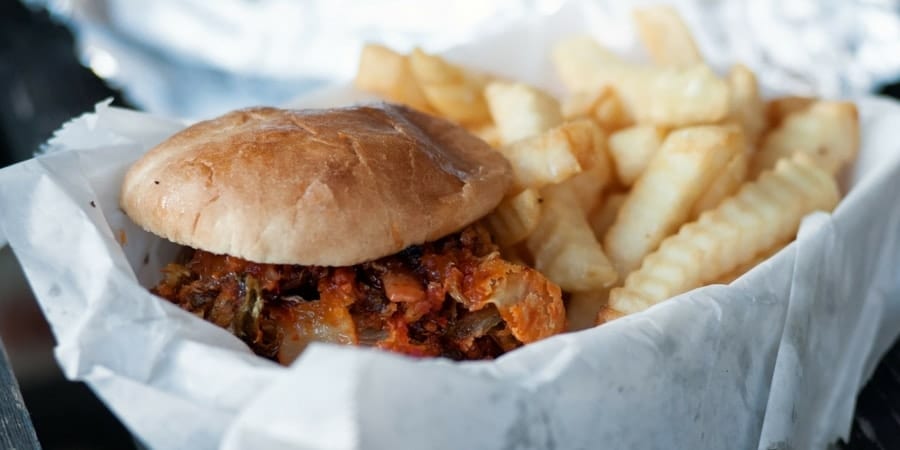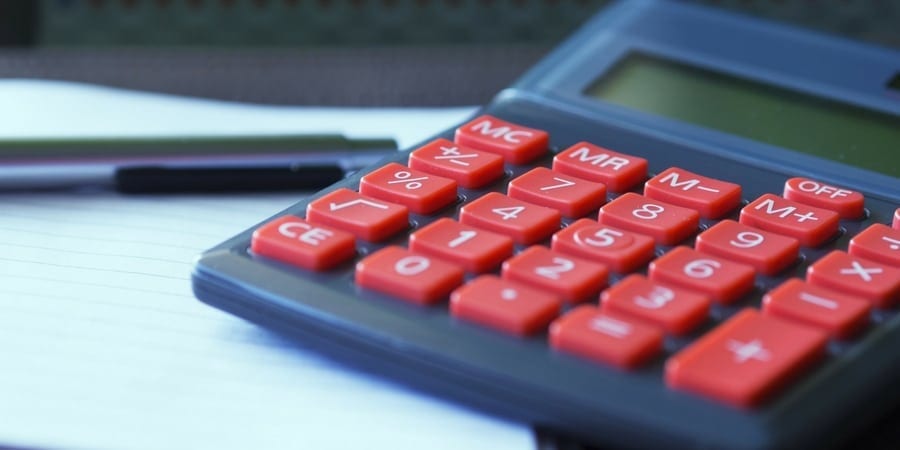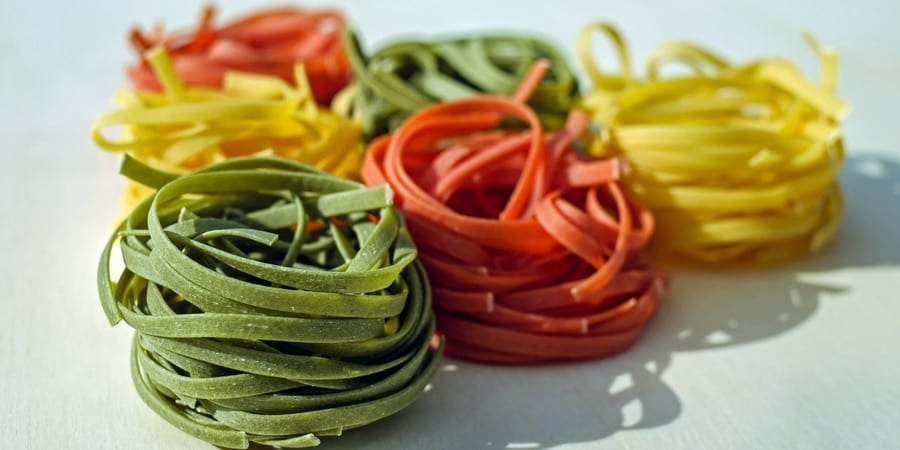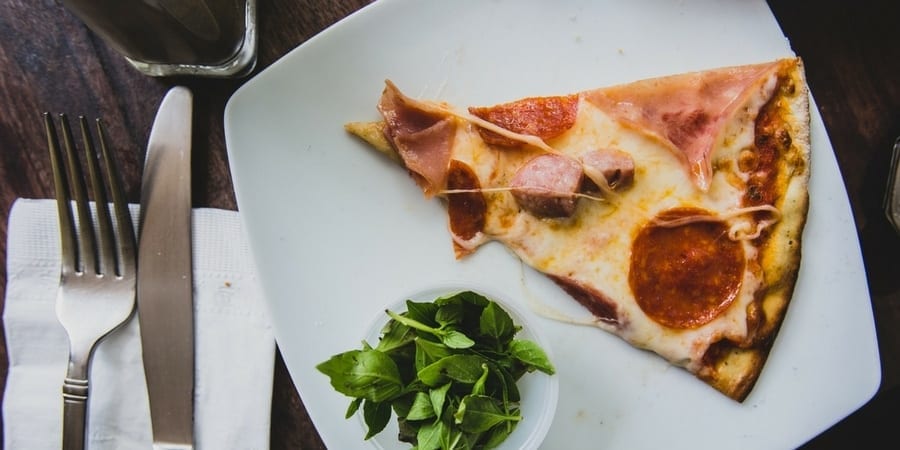If you’ve tried limiting your food portions before and are not getting the results you want, we’re here to help. You can burn fat while eating nutrition and delicious food.
We’ll show you how to take advantage of calorie deficiency to lose weight safely and quickly. Unlike one of those restrictive diets that have you feeling tired and hungry, you’ll learn how to burn fat by regulating what you eat, and feel great while doing it.
Five Ways to Make Calorie Deficiency Help You Lose Weight
- Remember that a diet is useful for many things, but a calorie deficit is what you need to burn extra body fat.
- Check your body fat percentage and maximum daily calories. Recheck it when you lose or gain some muscle.
- Avoid crash diets and eat enough calories to avoid metabolic damage. If you fall far below your daily nutrient requirements, it will be hard to burn extra fat, and you might even gain fat.
- Create your calorie deficit from exercise instead of only eating less, which will help to maintain body composition while burning extra fat.
- Eat different kinds of nutrient-rich food to feel fuller. A complete protein, fibrous carbohydrates, and polyunsaturated fats. Learning to cook and being willing to try new things will expand your healthy food choices.
BONUS TIP! If your goal is to stay safe and avoid being uncomfortable, start off with a small calorie deficit. Start off with a 10% calorie deficit.

Dieting Vs. Calorie Deficit – What is a Calorie Deficit?
Almost everyone has heard the word diet, but not everyone has heard about a calorie deficit. These two weight loss essentials sometimes get mixed up.

There’s a lot of confusion about how to control portions and lose weight. We’ll help you sort it out as we look closer at the difference between a diet and a calorie deficit.
What’s the Definition of a Diet?
Dieting is all about eating certain kinds of food. We’re talking about processed vs. unprocessed food or dairy vs. non-dairy. The point of dieting is to increase health and optimize nutrients.
Although, you can design a diet for fat loss, by including more protein for instance.
Diets are more about where your food comes from and what is in it, not so much how much of it there is. Most popular diets have an approved food list that you can follow to get all your nutrients.
These can be more or less restrictive. Doctors are usually the ones that prescribe the more stringent diets, and this is often for medical reasons. The ketogenic diet is a great example, as it restricts carbohydrates.
Now What’s a Calorie Deficit?
A calorie deficit is all about eating a certain amount of food. The point of a calorie deficit is to burn more calories than you consume.
You need to know particular facts about your body to go on a calorie deficit and see results. Everyone uses up a different number of calories each day.
In a calorie deficit, the first thing to do is find out your maximum calories per day to maintain your weight. You then track your calorie intake and stay below your maximum calories.
You don’t necessarily have to eat less food than unusual. You can increase the number of calories you burn each day by being more active.
Whether you like it or not you are on a diet, though it may be one you made up on your own. But a calorie deficit is not for everyone.
Calorie deficiency is to lose weight and has the effect of burning extra body fat. So, if losing fat is your goal, then you will get the best results on a healthy diet as well as in a calorie deficit.
Maximum Calories per Day – How Many Calories Am I Supposed to Eat?
The number of calories we each burn in a day differs. The two primary factors are how active your lifestyle is, and how much muscle you have.

Calories you burn from exercise plus your BMR adds up to almost all the calories you burn in a day. The number close enough to use as an estimate of your maximum calories per day.
Maintenance Calories
BMR is your basal metabolic rate. These are calories burned from necessary things like breathing, pumping blood, and blinking.
More importantly, this includes the calories used up maintaining lean muscle. The cells in our muscle fibers need energy like all our other cells. The more lean muscle you have, the more calories you will need each day.
There are two common ways to measure BMR, one is with, and one is without including body fat percentage. Using body fat percentage will give you the most accurate readings.
Knowing your body fat percentage tells you how much lean muscle you have. Invest in and use a body fat caliper, which is how most people keep track of their body fat percentage.
Burning More Calories
Every time your body moves your burn calories. You can measure your level of physical activity by basing it on three things. What you do for work, what you do for fun, and how difficult your exercise routine is.
Professional athletes must exercise a lot at work. Your average person gets up and goes to a job every day and does at least some walking.
Between the athletes and average people, are those who exercise almost every day. Weightlifters need hundreds, sometimes thousands of more calories than someone with a sedentary lifestyle.
You can find out your maximum calories per day if you haven’t already. Unless you are an athlete you can put BMR and physical activity together with this quick math.
Multiply your BMR by 1.25 if you’re not very active. Multiply your BMR by 1.5 if you workout or do difficult work three times per week, and multiply by 1.75 if you workout six times per week. You get the number of calories you burn each day.
Logic tells us that if you eat the same number of calories as you burn, your weight will stay the same.
We also know your maximum calories will go up as you build muscle and down as you lose muscle. Your metabolism also slows as you age and you lose some lean mass as a result.
Maximum calories per day is not a number to check once and leave it. Check it as often as needed to align your calorie intake and exercise habits with your current goals.
Starvation Mode – Symptoms of Not Eating Enough
Your metabolism’s number one job is to keep you alive. It’s always responding to your activity levels and calorie intake. Your metabolism works side by side with your maximum calories per day.

You still want to keep that in mind if you consider giving your body fewer calories than it needs. Your metabolism will be a little slower as a result of a calorie deficit, that’s why fat burners work to keep it going.
Metabolic Slow Down
Your metabolism may slow when you make dramatic changes to how many calories your burn or consume. For example, not eating for 24 hours, or exercising a lot without eating more can begin metabolic slowdown.
Adaptive thermogenesis is when your metabolism slows, and muscle loss occurs to match metabolic output with your calorie intake.
Your body is low in nutrients and wants to lower its production, so your immune system can use available nutrients to catch up.
If you’ve ever tried a “crash diet” you weren’t getting enough calories for essential functions. Or let’s say you are going through athletic training or weight lifting.
Your immune system will spend some time restoring glycogen stores and sustaining/repairing muscle tissue. You will need more calories, and as a result, you will get hungrier.
Metabolic Damage
Metabolic damage occurs when you have been eating too few calories for an extended period. Your metabolism is now familiar with the fewer calories you burn each day.
Eating the same number of calories as you once did would soon result in fat gain.
If you want to lose weight without exercising, you need to eat less and move less to avoid metabolic damage.
You may experience a metabolic slowdown and lose muscle mass, but you can lose weight this way and prevent malnutrition by getting enough calories as well as the nutrients your body needs.
You can avoid this all together by eating more and exercising more while in a calorie deficit.
Burning Fat Instead of Muscle – Exercise to Lose Fat
When you burn more calories, your body will need to make up those extra calories from somewhere.

If your goal is fat loss, you can get most of what you need from food and burn the rest from fat stores.
Avoiding Muscle Loss
Some muscle break loss may happen while in a calorie deficit. Which is why calorie deficiency to lose weight and weight lifting go great together.
Not to mention lifting weights burns calories. Cardio burns more calories than strength training, however, weightlifting still uses up extra calories, and it adds up the more you do.
Doing cardio alone do burn fat will likely result in noticeable muscle loss. Avoid this all together and lift some weights while you are to burn more fat. You’ll also end up feeling great, as well as looking more toned and fit in the end.
If you do not have much muscle or are not exercising, then your calorie requirements may be lower than you think. You’d do best to be precise with your portions.
Try meal planning to make sure you are not eating too many calories at each meal and each day. Remember, knowing your calories is the first step to a healthy calorie deficit.
Eating Right and Exercising
If you are losing weight by exercising and eating right, eating enough food may be your challenge. A new diet with new food and diet restrictions can make it hard to pick out enough food for all your meals.
It helps to know more about nutrition and hunger so you can eat delicious food that makes you feel full.
Getting enough food is another reason to meal plan or set reminders to eat, especially if you’re new to dieting and don’t know any recipes. Some pay a cook to prepare their meals.
If you have gone on a diet, get your hands on a prebuilt approved food list. Then pick some of your favorites and add them to meals you already know how to make.
Doing this is a great way to transition to eating nutrient-rich food, which is what the next section is all about.
If you want to start out simple, eat to maintain your weight and exercise a little more than usual. You’ll create a small deficit that only includes the calories burned by the exercise.
Doing this and starting with a small calorie deficit helps prevent metabolic slowdown.
Exercise burns calories, but only over time. Spending 30 minutes to an hour per day on most days running or doing aerobic exercise will do the trick.
Your calorie deficit will be small enough to avoid slow down, and you’ll burn more stored fat.
Nutrition and Balance – How to Feel Full on Low-Calorie Food
Mealtime is always going to be a focal point if you are trying to burn extra fat. The last thing you want is to try losing weight while on a new diet, hate the food and never feel full.

Mealtime requires a bit of planning and asking whether what you’re about to eat is going to help you feel full. Even if it’s a lot of extra work at first, you need to eat enough of the right calories. You need the calories that are going to help you feel full and keep your energy levels up.
Get Those Nutrients
The first thing to keep at the forefront of your mind is nutrient density. Pick out filling food that is full of fiber or complete protein. There are a lot of refined carbohydrates and high-fat foods out there.
They won’t give you the nutrients your body needs. You’ll feel full and satisfied if you stay away from food that is as little or no vitamins, minerals, and amino acids.
Eating low nutrient food, in general, will make you feel uncomfortable. Not to mention how disappointed you’ll feel when you aren’t able to resist your cravings.
These foods promote overeating due to high amounts of saturated fat and added sugar. These things taste delicious to most of us but are dangerous in large quantities.
Eating healthy means taking on the responsibility of finding healthy alternatives to cravings.
Nutrients Here, Nutrients There, Nutrients Everywhere
Macronutrient balance is eating the right amount of protein, carbs, and fats. The right amount is how much your body needs for standard functions to operate smoothly.
There are many variations to how many of each you can have to stay healthy. Your body can adapt to different ratios. The right amount of each macronutrient for you depends on your goals.
A nutritionist knows about healthy sources of macronutrients. You want to think like them while building your meal plan, one that includes protein, carbohydrates, and fats.
There are various diets that you can get health benefits from because all the successful ones have meal plans with healthy sources of all macronutrients.
Too much of any macronutrient creates the risk of malnutrition in another. Deal with poor nutrition by getting the right nutrients from food or supplements.
You can avoid all that by including all your macronutrients in your healthy diet. Make sure your food is nutrient-dense. If you are low in any nutrients, it is also harder to tell when you are full.
A diverse diet full of nutrients will ensure you are not low in any one of these macronutrients. You will feel full longer and have fewer cravings.
One thing that you can always keep simple is what to drink. Drinking plenty of water will help to reduce cravings and recognize real hunger.
In Conclusion
No one wants to work hard to get little or no results. You now have the information and tools to burn extra fat by creating a healthy calorie deficit.
Get to know more about your body composition and set a body fat goal, not a weight loss goal. Once you start seeing results, you will feel a new motivation to keep you going toward your goal.

